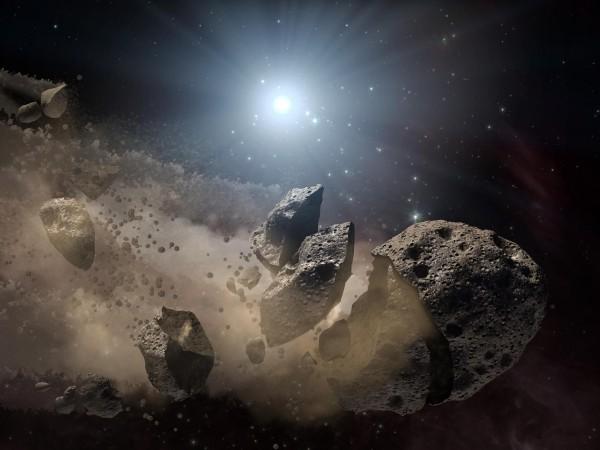
A new study claims that Earth's surface behaved like liquid on being struck by the giant dinosaur-killing asteroid around 66-million-years ago. The impact completely wiped out dinosaurs and created a 60-mile-wide hole on Earth's surface referred to as the Chicxulub crater.
According to geophysicist Sean Gulick from the University of Texas, the entire event of Earth being smashed by this asteroid took place within a span of five minutes.
Earlier this year, a team of researchers led by Gulick collected samples of the Chicxulub crater mountain ring located at the coast of Mexico. These samples led to a big debate regarding how the planet's surface reacts on being hit by an asteroid. This debate also aroused curiosity regarding how the mountain ring or the "peak ring" is formed.
Arguments by some researchers point towards this process being overpowered by the liquefying of Earth's surface. This belief suggests that the peak rings were originated by the side-to-side movements of the materials present on Earth's surface.
"So, things collapse in from the sides, fairly shallow, and in that model this ring of peaks are created by shallow material kind of moving towards the centre and being uplifted," Gulick was quoted as saying by The Two-Way.
Though some researchers said that the motion of the materials was side-to-side, others believe the movement was more dramatic which included a liquid-like push of the matter from deep down the Earth's surface. This theory was believed to be precise by the team.
"It was just so obvious, even on the drill floor when we're out there, out in our hard hats and so on, looking at these cores coming up," Gulick said.
The samples of the crater analysed by the researchers comprised of pink granite, which is found around 10 kilometres deep under the planet's surface. During the Cretaceous Period, the planet's surface consisted of limestone.
"And it was just plain as day and everybody staring at it went, 'Wow, there's the answer. It's from deep'," Gulick said.
He pointed out at the quick process to what happens when a rock is thrown in a pond. "It makes a hole initially as the rock penetrates into the pond. And the sides will sort of collapse inward toward the hole, while the centre kind of rebounds up like a big water droplet rising up," Gulick explained as per The Two-Way report.
"If you picture all of this happening in a slightly slower-moving fluid than water would be, you can envision that the centre that rebounds upwards and splashes upwards would kind of collapse outwards. So, just as the sides are falling in, this rebounding centre is sort of collapsing outwards to create ... this ring of mountains, made from material that ultimately came from fairly deep," he added.













